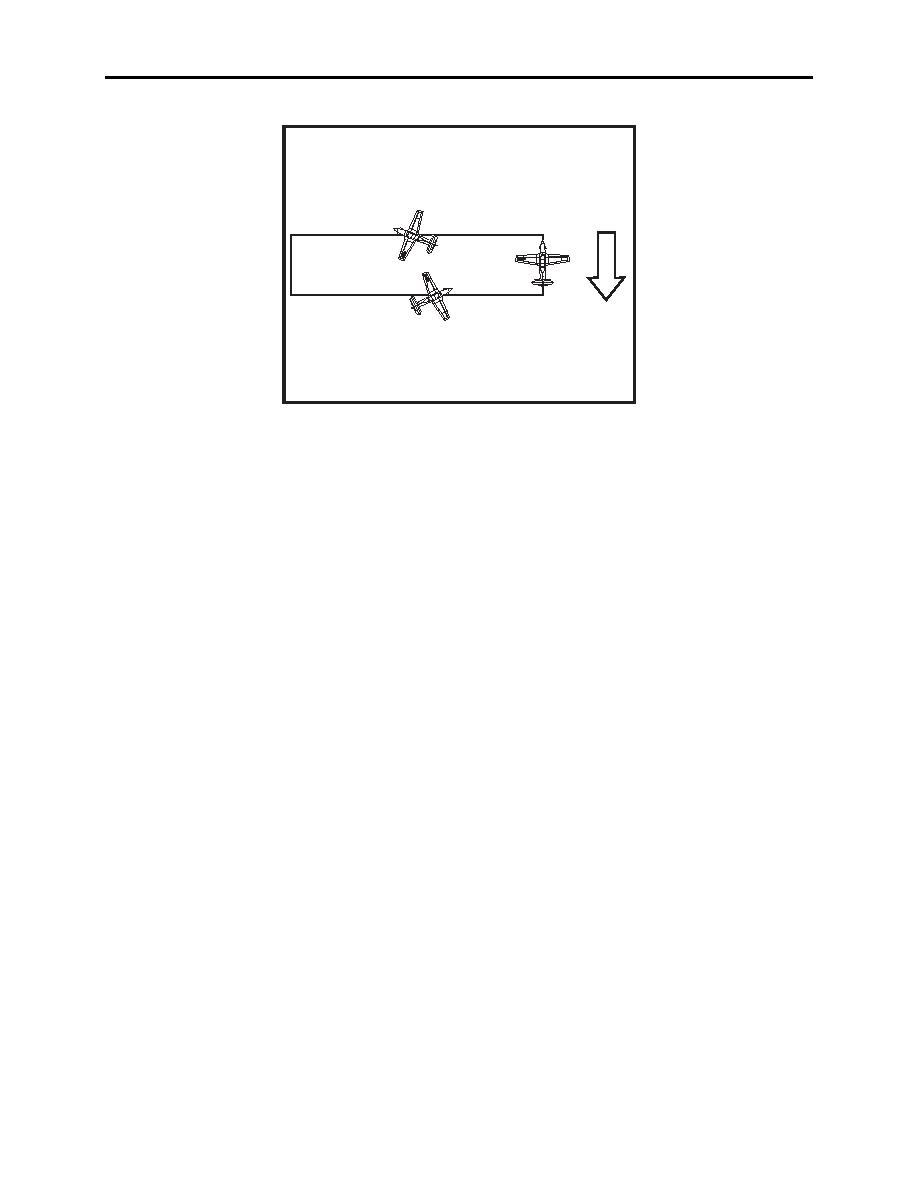 |
|||
|
|
|||
|
|
|||
| ||||||||||
|
|  T-34C CONTACT
CHAPTER FOUR
W
I
N
D
Figure 4-9 "Crabbing" Flight Path
411.
CLIMBING FLIGHT
For an automobile to go uphill at the same speed as that being maintained on a level road, the
driver must "step on the gas"; that is, power must be increased. This is because it takes more
work to pull the car's weight up the hill and to maintain the same speed at which the car was
moving along the level road. If the driver did not increase the power, the automobile might still
climb up the incline, but it would gradually slow down to a speed slower than that at which it
was moving on the level road.
Similarly, an airplane can climb at the cruise power setting with a sacrifice of speed, or it can,
within certain limits, climb with added power and no sacrifice in speed. Thus, there is a definite
relationship between power, attitude, and airspeed.
When transitioning from level flight to a climb, the forces acting on the airplane go through
definite changes. After the addition of power, an increase in lift occurs when back pressure is
applied to the elevator control. This initial change is a result of the increase in the angle of
attack, which occurs when the airplane's pitch attitude is being raised. This results in a climbing
attitude. When the inclined flight path and the climb speed are established, the angle of attack
and the corresponding lift again stabilize.
As the airspeed decreases to the climb speed, the downward force of the air striking the
horizontal stabilizer becomes less, creating a longitudinally unbalanced condition that produces a
tendency for the airplane to nose down. To overcome this tendency and maintain a constant
climb attitude, additional back pressure must be applied to the elevator control.
The primary factor which affects an airplane's ability to climb is the amount of excess power
available; that is, the power available above that which is required for straight-and-level flight.
FUNDAMENTAL FLIGHT CONCEPTS
4-17
|
|
Privacy Statement - Press Release - Copyright Information. - Contact Us |